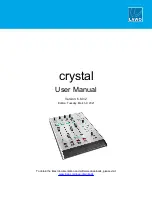
OPERATING TIPS
A. Filtration and salt system operating periods
Run your filtration system and salt system for at least 6 to 8 hours per day. During very hot
weather it may be necessary to run the systems for additional hours, but in winter where pools
remain open, the filtration system may be run over a shorter period of time. Shorter periods will
help to lengthen the life of the cell electrodes.
B. Free (residual) chlorine reading
The free chlorine residual in the pool should be between 1- 3 ppm. Increasing the daily operating
period of the system increases the free chlorine reading, and a shorter operating period reduces
the chlorine reading. Likewise, operating the Zodiac EZ SALT Chlorine Generating Device at
maximum output will produce a higher chlorine reading than operating at a lower setting.
C. Chlorine stabilizer (cyanuric acid) level
The chlorine stabilizer (cyanuric acid) reading should be between 30-100 ppm. This will vary
depending on your regional climate. Chlorine stabilizer helps to keep a satisfactory free chlorine
reading in hot sunny climates. Extremely hot and sunny climates will require readings at the
higher end on the given range. Refer to stabilizer chart on page 23. Cyanuric acid prevents rapid
destruction of chlorine by the sun’s rays. Regulations may exist regarding the use of cyanuric
acid; please consult your local authority. NOTE: Cyanuric acid is not needed for indoor pools.
D. pH
readings
It is ABSOLUTELY ESSENTIAL that the pH of the pool be maintained in the range of 7.2 – 7.8.
The effectiveness of chlorine as a sanitizer is significantly reduced as the pH rises. At a pH of 8.0
nearly all of the chlorine being added to the pool is ineffective, and it will be almost impossible to
maintain a satisfactory free chlorine reading. Over chlorinating will cause an increase in pH.
Maintain a chlorine level of 1-3 ppm and do not super chlorinate or shock unless necessary.
E. Super
chlorinate
function
The ‘boost’ button automatically boosts chlorine levels for a period of 24 hours. During this time it
is safe to swim. Use the function only in situations of increased bather load, or if experiencing
trouble (see Troubleshooting section). If your chlorine levels are appropriate (1-3 ppm), super
chlorinating on a regular basis is not necessary and will raise pH levels and reduce the life of the
cell.
F. Regular maintenance checks.
Daily:
•
Check the free chlorine.
•
Check the total alkalinity. Adjust if necessary.
•
Check the pH of the water. Adjust if necessary
Weekly:
•
Visually check the cell electrodes. Only if necessary, remove the cell and flush with a garden
hose to remove any debris that may have passed through the filter and lodged in the cell
housing. Avoid inserting objects into the cell which can scratch or bend the cell plates.
•
Check the pressure gauge on the filter to see if backwashing is necessary.
Monthly:
•
Check the salt concentration of the pool (see ‘Salt: When And How To Add It’).
•
Check the chlorine stabilizer reading. Adjust if necessary.
•
Rinse the pool walls and rails.
PLEASE NOTE:
20
















































